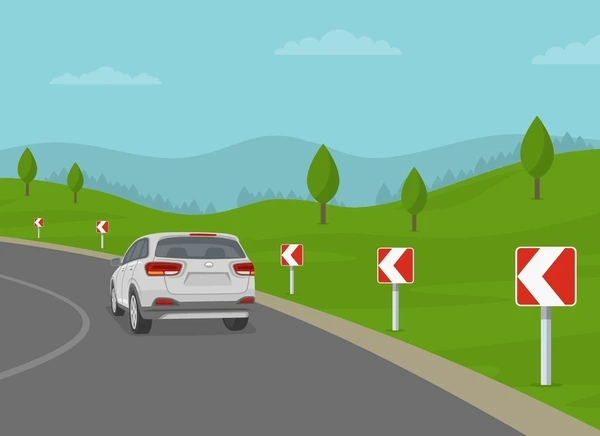Turning while driving is a common necessity, often due to the need to correct direction, change direction, or react to unexpected road conditions.
This basic driving skill involves a number of maneuvers that require precision, awareness and following the rules of the road.
In this study, we explore the complexities of U-turning, the legal aspects, techniques for safely U-turning, and the role of technology in improving this important driving skill.
Complexities of U-turning
Legal Considerations: Understanding Traffic Laws
Before diving into turning techniques, it is important to understand the legal considerations governing this movement. Traffic laws vary from jurisdiction to jurisdiction, and drivers should be aware of the specific rules for U-turns, three-point turns, and other turning maneuvers. Local signs and road markings provide guidance on where and how to safely make turns, emphasizing the importance of following these laws to ensure the safety of all road users.
U-turns and the Legal Framework: Intersection Challenges in Navigation
U-turns, a common form of turning, present unique challenges at intersections. Understanding the legal framework for inversions is extremely important, as they may be restricted or prohibited in certain jurisdictions. Drivers must pay attention to signs, yield to oncoming traffic and navigate the complexities of intersection geometry. Managing the legal aspects of U-turns is essential to safe and responsible driving.
Three Point Turns: Basic Turn Technique
One of the most important turns is the three-point turn. This maneuver involves a series of careful maneuvers, including reversing, steering and driving forward to complete a complete turn. Three-point turns are especially useful in tight or congested spaces, where a full reverse turn may be impractical. Drivers need to improve their skills with this technology to navigate effectively in different scenarios.
Navigating in Tight Spaces: Challenges and Techniques
Turning in tight spaces requires unique skills and techniques. Drivers must be able to judge the space available, use mirrors effectively and adjust the steering wheel accurately. Passing through residential streets, parking lots, or narrow alleys requires a better sense of space and the ability to make turns without endangering pedestrians, cyclists or other vehicles.

Safety measures and defensive driving: Risk reduction
If turning is not carefully done, it can endanger both the driver and other road users. Defensive driving principles play a crucial role in reducing these risks. Keeping a safe following distance, clearly indicating your intentions and anticipating potential obstacles are important components of a responsible turn. Drivers must assess their surroundings and adjust their movements accordingly to improve overall road safety.
Technical updates: Turn assistance systems
In the age of advanced automotive technology, driver assistance systems (ADAS) significantly facilitate safe turning movements. These systems, such as blind spot monitoring, reversing cameras and parking assistance, provide real-time information about the vehicle and its surroundings. The use of such technology improves the controls and the ability to turn safely, which reduces the likelihood of collisions and improves overall road safety.
Pedestrians considered: Navigate responsibly when turning
Turning involves more than just interacting with other vehicles; pedestrians must also be considered. Drivers should be especially careful near intersections, sidewalks, and other areas with high pedestrian traffic. Adhering to the right of way for pedestrians, consistent use of turn signals, and being prepared to yield when necessary are critical factors in responsible turning that contribute to the overall safety of the road environment.
Training initiatives: Improving turning skills
Considering the importance of turning in driving, training initiatives play a crucial role in improving driver skills. Comprehensive driver education programs should include detailed training on legal considerations, turning techniques and the importance of defensive driving. Informed drivers are better equipped to make turns safely and responsibly, which contributes to the overall safety of the road network.
Conclusion:
Finally, turning while driving is a basic skill that involves a variety of maneuvers, including U-turns and three-point turns. Navigating curves requires a thorough understanding of local traffic rules, mastery of cornering techniques, and a commitment to safety through defensive driving. As technology advances, driver assistance systems will further improve curve safety. Incorporating these skills into comprehensive driver training programs ensures that drivers are well prepared for the challenges of responsible turning, contributing to the overall safety and efficiency of our roads.
